Talk 40: Understanding "voodoo" death and a particular subset of suicide through the activity "Directorate of Internalized Characters"
Greetings
We will discuss "voodoo death" first. Voodoo death is a term coined by Walter Cannon in 1942, also known as psychogenic death or psychosomatic death. It is a phenomenon of sudden death caused by a strong emotional shock, such as fear of some external force. Voodoo death is particularly noted in indigenous societies, but also in concentration camps or prison camps, and the situation is not specific to a certain culture. [W.B. Cannon, "Voodoo" Death, American Anthropologist, 44, pp. 169–181, 1942]. Leach, in an interview with Medscape Medical News, noted that these people usually go through five distinct stages that include: withdrawal, apathy, abulia [loss of willpower], mental akinesia [motor immobility] and psychogenic death.
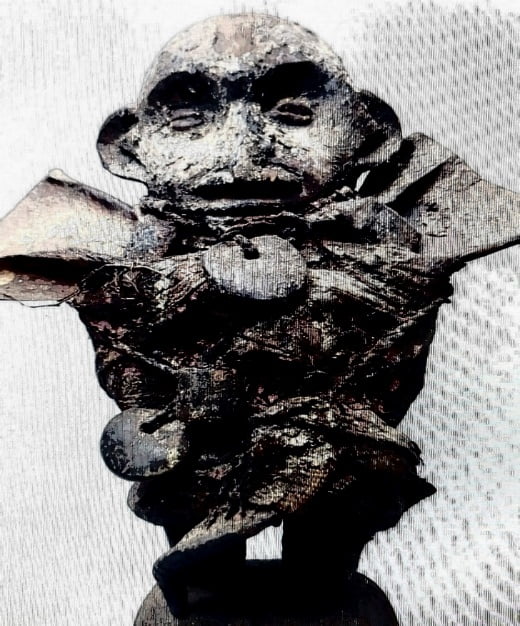
Thus in 1942, Walter Bradford Cannon, MD, cited examples of unusual deaths (and their external circumstances) in aboriginal societies, suggesting that fear of supernatural consequences for breaking social taboos caused the natives to die…what Cannon described has since been coined "bone pointing syndrome", in which a person receives some kind of shock – often the breaking of some social/religious taboo – which he interprets as a bad sign for himself; his physical condition deteriorates rapidly, and he dies within a short period of time like 24 hours after the initial shock. Cannon discusses the example of a Maori woman who learned that the fruit she ate came from a forbidden place that had a taboo about it; less than 24 hours later she died. On the other hand, Cannon also gives an example of a young man who fell ill when the local shaman aimed a bone at him, a social taboo that means a death curse; However, when the shaman explained to the young man that the whole thing was a mistake, and that the bone was not directed at him, the young man's health returned immediately [following this case, the syndrome was also called the "bone pointing syndrome"].
Cannon notes the similarities in each case: both individuals were members of a society where beliefs in the supernatural are fiercely guarded, and both suffered from what they both believed to be some form of curse as dictated within their personal beliefs; also, the individuals shared similar physical symptoms. Still, in the young man's case, once the cause of the mental distress was removed, his mysterious illness disappeared [see Wikipedia].
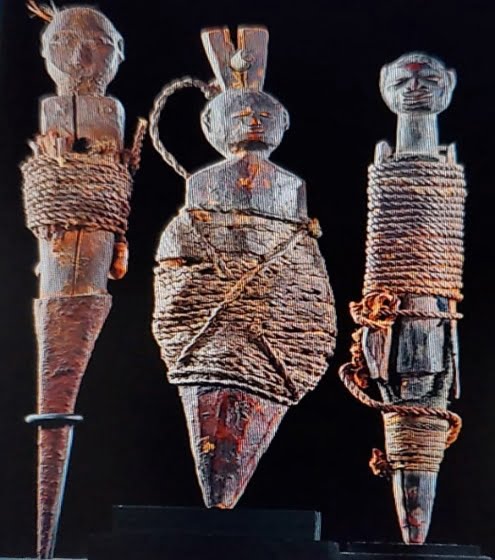
According to Cannon, the emotion of fear acts on the brain, on the "sympathetic arm of the nervous system and on the activity of the adrenal gland" which induces a decrease in blood flow to the organs of the body. This is followed by an accelerated heart rate, followed by rapid breathing. To these symptoms are added the effects of the lack of food or drink in the person experiencing psychological distress: Cannon suggests that the combination of lack of food and water, anxiety, very fast pulse and breathing associated with a shocking experience with lasting effects, fits well with the lethal conditions reported in primitive tribes."
Since 1942, scientists have discovered many other processes involved in the effect of stress and fear on the body, such as the activation of the area of the brain called the amygdala. Also corticotropin, the stress hormone secreted by the brain's hypothalamus and coordinated with "adrenaline centers in the brain stem involved in the induction of the sympathetic response lead to loss of appetite, weakness, heart rhythm disturbances and even blood vessel collapse that can cause death."
However, Dr. David Lester, in 1972, argued that Cannon's evidence was anecdotal and irrelevant, and instead introduced the concept of "death by suggestion," thus attributing the cause of death entirely to the psychological state of the individual in question and not to the psycho-physiological relationship presented by Cannon.
Still others rejected the idea of "voodoo death" altogether, stating that the deaths in the cases reported by Cannon and others were due to dehydration rather than any psychological reaction.
Although cases within Aboriginal societies are the most cited when researchers such as Cannon present examples, similar cases of psychosomatic death have been reported in other cultures as well.
In his 1964 article, James L. Mathis, MD, describes a case of a formerly healthy man who died of asthma attacks when his mother "cursed" him for acting against her wishes. Mathis suggests that the "lethal psychosomatic conditions" were the cause of this man's death, and therefore it is a form of voodoo death.
Midor (1992) described a case of a man with esophageal cancer and uncontrolled diabetes who decided it was time to die. The doctor was able to motivate the man to live through Christmas, which he did, but he died shortly after the New Year. The autopsy revealed that the cancer diagnosis was false. He had a small benign liver tumor and a mild case of pneumonia. Midor claimed that he supposedly died of cancer and pneumonia, but actually not of either of them. He argued that his case met the criteria for voodoo death because the man and his family believed the previous doctor's declaration that he was going to die, and they all acted as if he was going to die.
How can our theoretical background which holds that the social self of each one of us is made up of a collection of internalized characters that we called the "board of internalized characters" try to explain the voodoo phenomenon?
We will once again remind those of you who have not gone through the previous chapters and talks that in the model we propose for the "self", one must first differentiate between the primary self, which is actually the basic biological nucleus consisting of a number of innate structures and which is subject to development during life and the "social self" [consisting of "secondary selves"], which is a structure that develops during a person's exposure to social influence, and consists of internalizations of figures significant to a person, originating either from external groups or from imaginary groups (for example, in the form of a story, from a myth, from a movie, etc.) that were having a considerable effect on the person). We will note here that at birth there are innate patterns for most parts of the self such as the "social self" and its parts that form nuclei for a possible future development of these structures.
The "secondary selves" included in the "social self" include 1] the variety of representations of the "Me" that originate from attitudes and feelings towards the self and its representations in different periods of life, 2] the representations of internalized figures that often originate from significant figures that the person is exposed to during his life but as mentioned may also be imaginary characters represented in books, films, etc. that have had a considerable influence on man, 3] internalized representations of the "subculture" [subculture refers to social influences in the milieu [environment] in which the person lives and are not necessarily related to a specific person].
We call the social self metaphorically the "directory of characters" or more specifically the "directory of internalized characters."
We note that, as we mentioned before, in this board there is usually a hierarchy in which there are more influential and dominant figures that we metaphorically called “dictator self or dictator selves" and these set the tone and even censor what content, attitudes and behaviors cannot be contained in the board of figures. We note that the person as a whole is not aware of the influence of the board of characters and recognizes the influence as coming from himself and his own will and attitudes. We will also note that, as a rule, the board of directors is very dynamic and there are constant struggles and power relations between the internalized characters that make it up on the attitudes that will be expressed when the dictator self or selves dictate the tone.
In addition, we also assume the existence of another internalized group that we call the "enemy group of internalized figures". This group includes figures who stand in clear contradiction to the positions of the internal "board" (often represented by the dictator self (selves) and who are seen as a threat to the positions and values of the board or even to its survival.
We note that the relationship between the "board" and the "enemy group" is greatly influenced by the attutudes of the dictator self (selves), and reflects the degree of tolerance of these attitudes.
For our assumption in voodoo death, a person has an internalized group consisting of the internalization of the significant people in the realistic external group and all those who boycott him in reality or believe that he will die or that he deserves to die due to violating a social taboo in a serious and unforgivable manner. He has no other internalized figures that can ameliorate these effects or support his self-representation and the like. The figures of his self in his representations on the board of directors are transferred to what we called "the internalized enemy group". This is a psychological condition in which an individual has no right to exist. Let's recall that within the board itself there is a hierarchy and there is an influential figure or figures that we called "the dictator self or selves".
In cases of voodoo death these feel that the person himself and his representations [self representations] on the board violated general norms and taboos in such a severe way that they have no place on the board but in the group of enemies. This causes such great stress and fear that the physiological mechanisms associated with voodoo death are activated, for example, as in the case of the dominant mother who cursed her son. mentioned above.
We will now briefly discuss the second issue related to suicide.
The subject of self-harm is one of the most painful problems in psychiatry. Nearly a million people die every year due to suicide according to the World Health Organization and non-fatal self-harm is of course much more common. The reasons for suicide are many but are usually associated with great suffering, depression, feelings of hopelessness and helplessness. As a rule, suicide is an act of causing one's own death with the clear intention. Mental disorders (including depression, bipolar disorder, schizophrenia, personality disorders, anxiety disorders, attention deficit hyperactivity disorder, cognitive disintegration syndrome), physical disorders (such as chronic fatigue syndrome), and drug use (including alcoholism and benzodiazepine use and withdrawal) are risk factors.
Some of the suicide cases are impulsive acts resulting from stress (such as financial or academic difficulties), problems in relationships (such as separations or divorces), or harassment and bullying. Those who have attempted suicide in the past are at a higher risk of future attempts. Effective suicide prevention efforts include mental health treatments, limiting access to suicide methods such as firearms, drugs and poisons; treatment of mental disorders and drug abuse; Careful media reporting of suicide; and improving economic conditions [see Wikipedia].
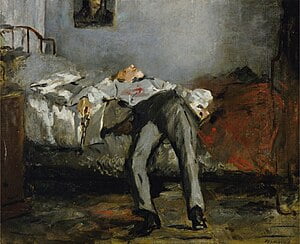
"Suicide" Edward Manet
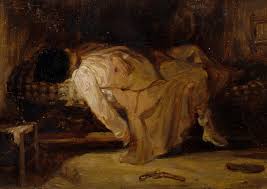
Painting: The act of perdition

Death of Mara – Zach Louis David
We will now move on to an attempt to explain a certain group of the phenomenon of loss.
We talked above about the Dictator Self. We distinguish between several subtypes of "dictator selves". The subtype that seems more relevant to the topic of suicide is the one we call the "moral apostle" and is based on a concept of moral superiority that is not imposed. This internalized dominant figure is characterized by the following:
Moral norms are of universal significance and of supreme value
Any deviation from these norms is unacceptable and must be punished
Good must always prevail over evil.
As you can see, these positions are intolerant of any violation of the norms.
We hypothesize that in some cases of extreme self-harm or suicide, we can expect the following constellation:
a] As a rule, the moral norms are very strictly observed and a person has uncompromising positions in this regard.
b] The person's behavior or actions in X event or events are perceived by himself or by the others significant to him [his reference group] as clearly incompatible with the positions of his dictator self (selves).
c] The result is an immediate perception that a very severe punishment is inevitable.
d] In the case of suicide, the appropriate punishment is causing self-death.
The mechanism we propose in such a case of suicidality is the removal of the person's self-representations from the directory of internalized characters and transfering them to the "enemy group".
There is in the absence of other relevant reference groups (and their corresponding internal counterparts in the directorate of internalized characters) that would modify or moderate the rigid and punitive attitudes of the dictator self (selves). In this case, as mentioned, the dictator self of the person is in serious conflict with person’s self-representations and leads to their relegation to the enemy group.
It can be assumed that in depression with suicidal thoughts there is a high probability of the existence of the dictator self characterized by distinct qualities of a "moral apostle" this situation can lead to symptoms such as severe feelings of profound guilt, lack of self-worth and more.
As can be concluded, a therapeutic intervention in the method of treatment focused on the reference groups [RGFT] can include:
1. An attempt to change the hierarchical position of the internalized characters by strengthening the supporting characters and weakening the tyrannical and pathogenic ones.
2. Creating a new supporting character (one of them can be the therapist himself)
3. Creating a new supportive reference group and at the same time taking a distance from the pathogenic groups.
That's it for now
yours
Dr. Igor Salganik and Prof. Joseph Levine
 Prof. Joseph Levine, M.D. is an emeritus associate professor in the Division of Psychiatry, Faculty of Health Sciences, Ben Gurion University in Israel. Prof. Levine is a certified psychiatrist with clinical experience in controlled trials of adult psychiatric disorders and in psychotherapy. He was awarded a NRSAD independent investigator grant for the study of Creatine Monohydrate in psychiatric disorders -- mainly Schizophrenia. He resides and treats patients in Tel Aviv and all of central Israel.
Prof. Joseph Levine, M.D. is an emeritus associate professor in the Division of Psychiatry, Faculty of Health Sciences, Ben Gurion University in Israel. Prof. Levine is a certified psychiatrist with clinical experience in controlled trials of adult psychiatric disorders and in psychotherapy. He was awarded a NRSAD independent investigator grant for the study of Creatine Monohydrate in psychiatric disorders -- mainly Schizophrenia. He resides and treats patients in Tel Aviv and all of central Israel.
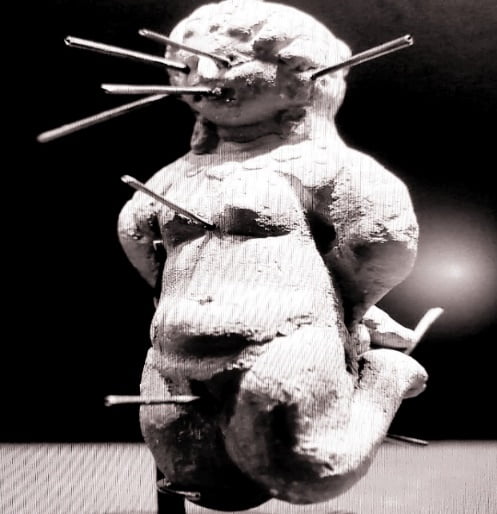
Leave a comment